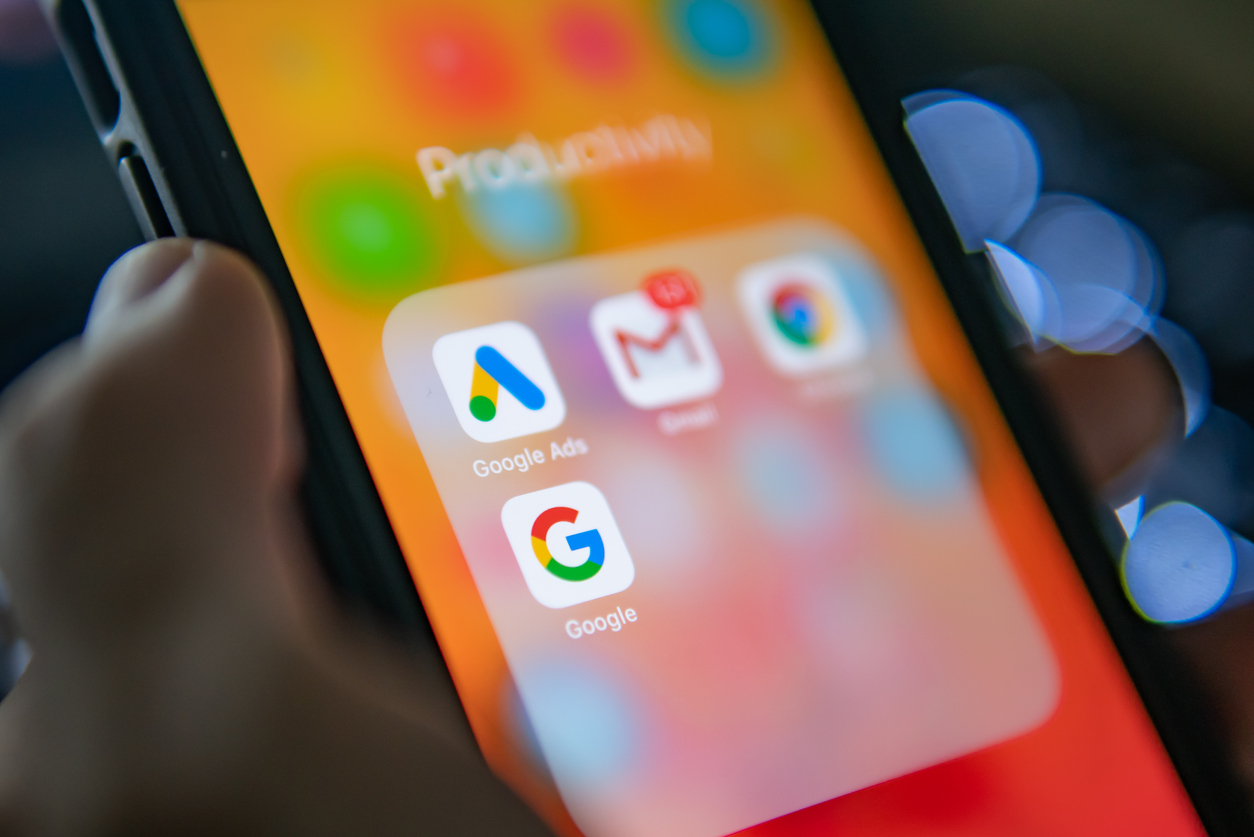Remember when Google’s search results used to look like this?
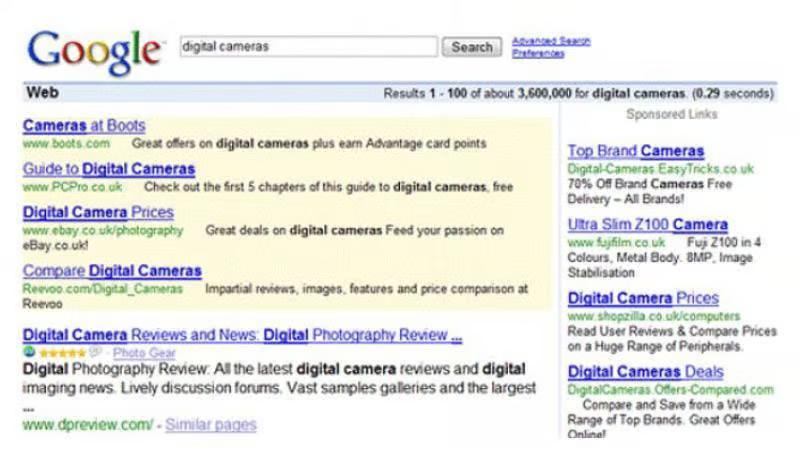
When I started freelancing in 2008-ish, Google’s search ads were the go-to option for driving traffic to your website. Display ads were just introduced after the acquisition of DoubleClick, and a year or so later, Product Listing Ads became an option for advertisers. CPCs were dirt cheap (with the exception of the keyword “mesothelioma”)
Fast forward to 2025, everything has changed. Artificial Intelligence and Machine Learning have fostered a completely new set of campaign options like Performance Max and Demand Gen to help advertisers reach even more people with visually appealing creative options that overshadow the standard text ad.
In this article, I’ll be focusing specifically on Google’s Demand Gen campaigns, what they are, and how they can help you as a small business owner, fill up your marketing pipeline and drive more leads and sales to your business.
Building awareness through Demand Gen
Google Ads' bread and butter has always been their search campaigns, allowing advertisers to target people searching for products and services as they are researching and ready to buy. But what about those who haven’t made the conscious decision to start shopping?
Enter, demand generation.
Traditional advertising focuses on interrupting potential customers with your message, but demand generation focuses on creating interest and desire for your products before customers even know they need them. This approach builds awareness and consideration among people who aren't actively searching for your business yet. For small businesses, this means reaching potential customers earlier in their buying journey.
According to Invoca, 81% of retail consumers conduct research before buying online, often discovering brands through social media, videos, and content recommendations rather than direct searches. Demand Gen campaigns place your business in these discovery moments across Google's most popular platforms, like YouTube and Gmail. This helps you connect with customers during their browsing and research phases, not just when they're ready to buy.
Only using Search campaigns (which is what many of our clients do) limits you from growth opportunities because they’re only reaching people actively looking for your services and not those who have not yet started their search. Search campaign CPCs aren’t getting any cheaper, either.
So, what is Demand Gen, and where will my ads show?
In a nutshell, Demand Gen campaigns are Google's visually-focused advertising format that shows your ads to people while they're browsing, watching videos, or checking email, rather than actively searching for products. Think of them as digital billboards that appear in the most popular spots where your potential customers spend their time online. These campaigns use eye-catching images and videos to grab attention and create interest in your business.
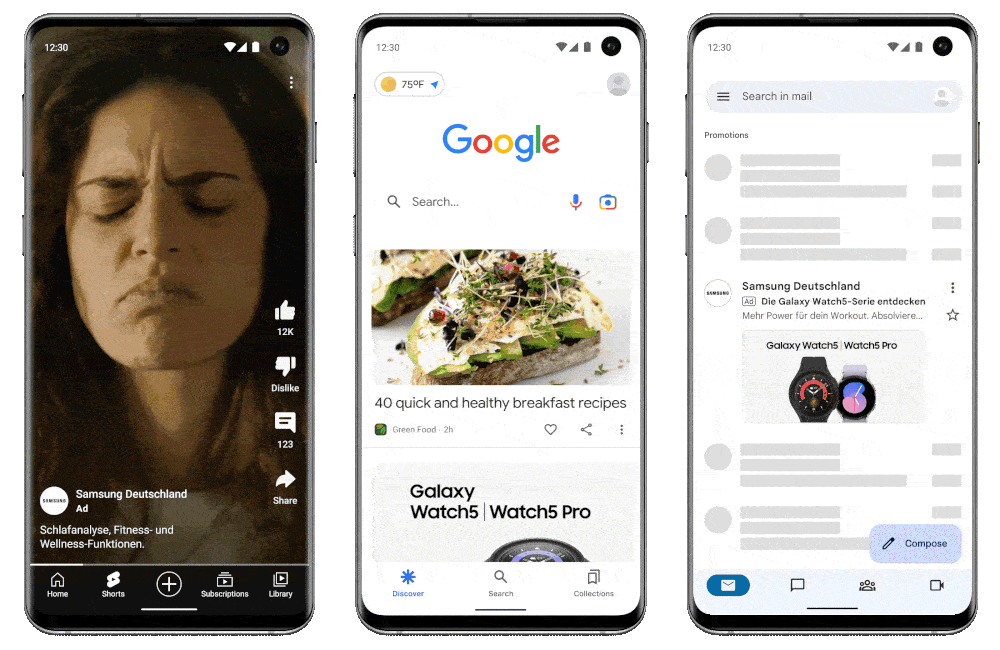
Ads will appear in YouTube feeds and as video ads, in the Google Discover feed that users see on mobile devices, and as visual ads in Gmail's promotions tab. These placements reach users during their leisure browsing time when they're more receptive to discovering new businesses and products. Each placement offers different ways to showcase your business through images, videos, and compelling headlines.
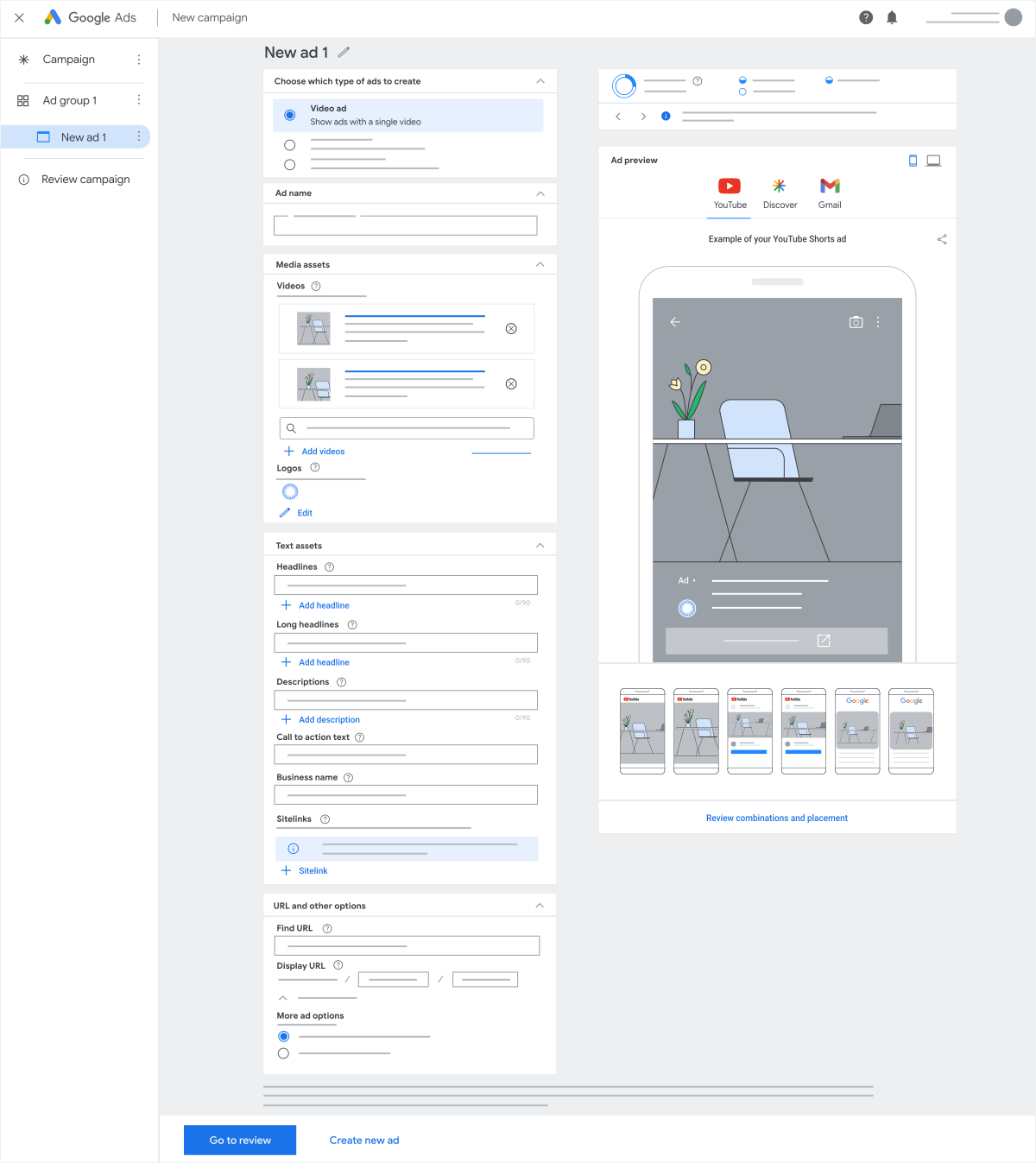
How do I use Demand Gen and Search together for success?
While Search campaigns show text ads to people actively searching for keywords, Demand Gen campaigns show visual ads to people who aren't necessarily looking for your business but might be interested. Search campaigns catch customers at the bottom of the sales funnel when they're ready to buy, while Demand Gen works at the top and middle of the funnel to build awareness and consideration. This means Demand Gen typically has a longer sales cycle but can reach a much broader audience.
Unlike traditional Google ads that rely primarily on text, Demand Gen campaigns prioritize high-quality images and videos to capture attention and convey your message. This format allows you to showcase your products, services, or brand personality in ways that text alone cannot achieve. The visual nature makes these campaigns particularly effective for businesses with photogenic products or services that benefit from demonstration.
When should I use Demand Gen campaigns? Am I a good fit for this campaign type?
Demand Gen campaigns excel when you want to increase brand awareness, reach new audiences, or promote new products/services to people who haven't heard of your business yet. They work particularly well for businesses looking to expand beyond their current customer base or enter new markets. These campaigns are also effective for businesses with longer sales cycles that benefit from nurturing potential customers over time.
Visually appealing products, lifestyle services, and businesses that can tell compelling stories through images or videos tend to perform best with Demand Gen campaigns. Industries like home services, fitness, beauty, food, retail, and professional services often see strong results because they can showcase their work or create aspirational content. Businesses that can demonstrate clear before-and-after results or transformations also tend to perform well.
Demand Gen campaigns work best for established businesses with proven products/services and some marketing budget to invest in brand building rather than immediate sales. If your business is in survival mode or struggling to stay afloat, you should probably focus on Search campaigns first for quicker returns. However, growing businesses ready to scale and increase market share can use Demand Gen to accelerate their expansion.
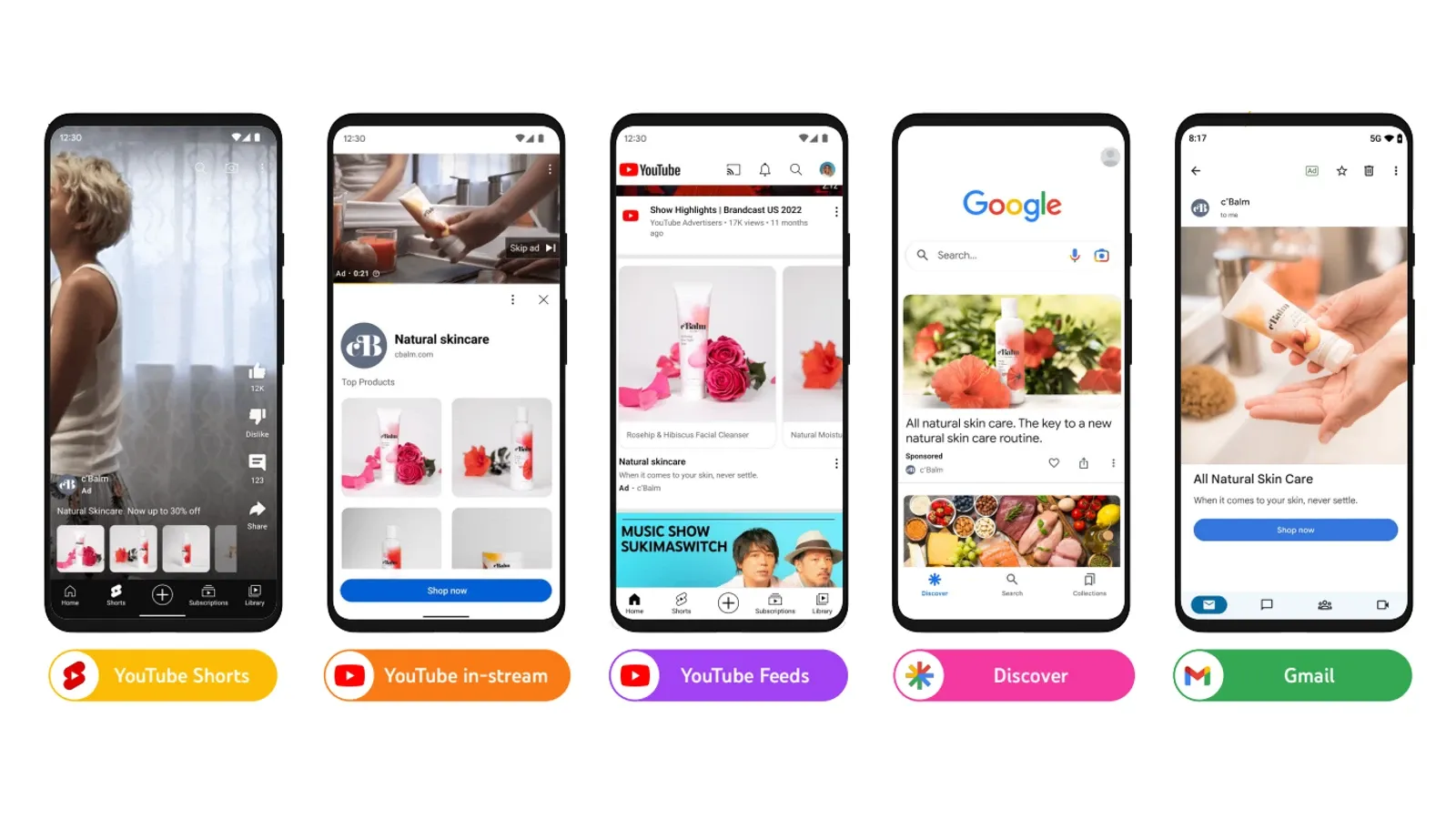
How much budget do I need to set aside to run a Demand Gen campaign?
Planning your budget for a Demand Gen campaign is different than Search as you don’t have Keyword Planner’s CPC figures to help you formulate cost-per-click versus traffic scenarios.
We recommend starting with at least $20-30 per day ($600-900 per month) for Demand Gen campaigns to gather sufficient data and see meaningful results. Smaller budgets may not generate enough impressions or clicks to optimize effectively, leading to poor performance and wasted spending. However, you can start with a smaller budget for testing purposes if you're willing to be patient with results.
Higher budgets allow Google's algorithm to find and reach more of your ideal customers, leading to better optimization and performance over time. Limited budgets may restrict your reach to only the most obvious prospects, missing opportunities to discover new audience segments. Budget also affects how quickly you can test and iterate on your creative assets and targeting options.
Demand Gen campaigns typically have a higher cost-per-click than Search campaigns but lower cost-per-thousand-impressions (CPM) than traditional display advertising. The visual nature and premium placements command higher prices, but the engagement rates are usually better than standard display ads. Expect to pay more per click but potentially see better quality traffic and higher engagement rates.
Creative requirements for Demand Gen campaigns
We’re huge proponents of video ads here at Verde Media, and highly recommend them (or animated ads) if you’re looking to capture the attention of your audience.
If you plan to lead with video ads, they should be 30 seconds or less, mobile-friendly, and engaging within the first few seconds to capture attention in busy feeds. Small businesses can create effective videos using smartphone cameras, simple editing apps, and authentic storytelling rather than expensive production. Focus on demonstrating your product in action, customer testimonials, or behind-the-scenes content that builds trust and connection.
If you’re low on video inventory and need to use photos, use high-quality images in specific sizes (1.91:1 landscape, 1:1 square, 4:5 portrait) with clear, professional photography that represents your brand well. Images should be bright, uncluttered, and feature your product or service prominently without excessive text overlay. Avoid using stock photos.
When writing your ad copy, make sure to use headlines that are compelling and benefit-focused. Google allows up to 5 headlines of 30 characters each and 5 descriptions of 90 characters each. Write in clear, conversational language that speaks directly to customer pain points and desired outcomes rather than technical jargon. Include strong calls-to-action that encourage users to learn more or take the next step in their customer journey.
Patience is key with Demand Gen
Just like any other modern paid media campaign, don’t expect to get results right away. The algorithm needs time to collect data and zero your ads in on the right audience. This initial part of the paid campaign is called the learning phase.
Most Demand Gen campaigns need 2-4 weeks to exit the learning phase and begin showing reliable performance data, with significant optimization occurring over 60-90 days. Demand Gen requires time to build audience insights and creative performance data. Small businesses should plan for at least 3 months of consistent running to properly evaluate campaign success.
When measuring campaign performance, ensure that you’re prioritizing your KPIs properly, focusing on metrics like:
- Reach - How many people saw your ads
- Engagement Rate - How many people interacted with your ads
- Conversions - How many people took desired actions like visiting your website or making purchases
- Cost-per-acquisition - For lead generation campaigns
- Return on ad spend - For eCommerce campaigns
We recommend tracking these metrics weekly, but make decisions based on monthly trends rather than daily fluctuations.
Is Demand Gen right for your business?
Demand Gen campaigns offer small businesses an opportunity to compete with larger companies for customer attention during the crucial awareness and consideration phases of the buying journey. Success requires patience, quality creative assets, and a sufficient budget to allow Google's algorithm to optimize effectively. These campaigns work best as part of a comprehensive marketing strategy rather than a replacement for existing successful campaigns.
If you’re seriously considering launching Demand Gen campaigns, start by auditing your existing creative assets and identifying gaps in visual content that need to be filled before launching. Ensure that your conversion tracking is properly set up, ideally with server-side tracking and/or Enhanced Conversions configured. Finally, ensure you have enough budget to run a campaign for 90 days with the patience to evaluate the campaign after the initial learning phase, which can take up to 2-4 weeks.
If you’re looking for help with campaign strategy, creative setup, conversion tracking, or have any general questions about running a Demand Gen campaign, reach out to us today!


